Visit the Temple of Heaven in pictures
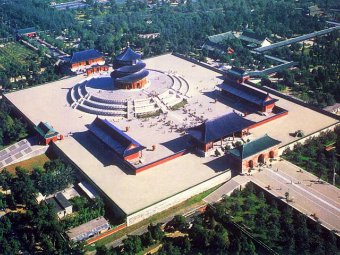
The Temple of Heaven (天坛 ) is the place where the Ming and Qing emperors came to celebrate rites and make sacrifices to pay homage to Heaven and implore it to give good harvests. Its organization is linked to Chinese cosmology, whose balance rested on the emperor through his attitude and respect for rites. The colors, shapes, sounds, and positions of the buildings represent this rather complex conception of the universe.
Location of the Temple of Heaven
The Temple of Heaven is located at the southern end of the old city of Beijing, in the Xuan Wu district. Its area is 273 hectares, almost double that of the Forbidden City. It can be accessed by buses No. 6, 15, 20, 39, 43, and 120 and trolleybuses No. 106 and 116.
History of the Temple of Heaven
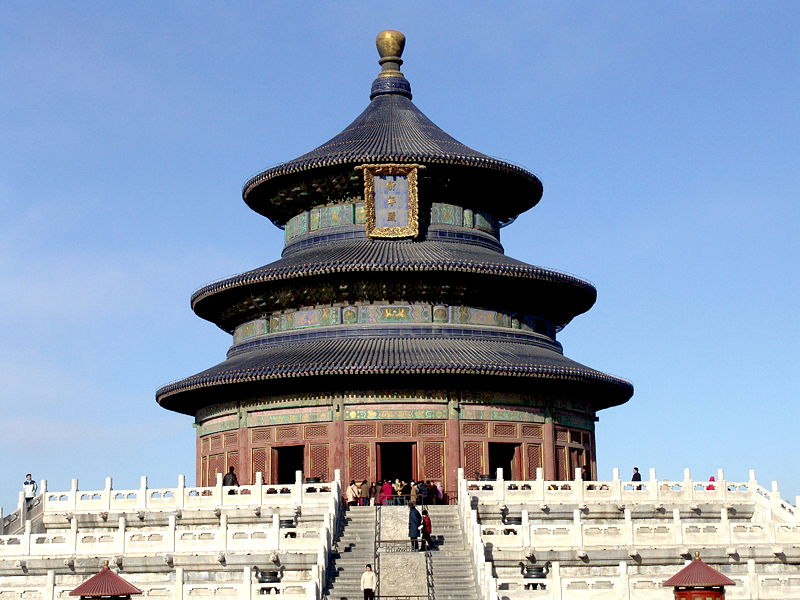
Originally called the Temple of Heaven and Earth, it was built from 1406 to 1420 during the reign of Emperor Yongle, who was also responsible for the construction of the Forbidden City. The temple was expanded and renamed the Temple of Heaven during the reign of Emperor Jiajing in the sixteenth century. The Temple of Heaven was renovated in the eighteenth century under Emperor Qianlong. The Temple of Heaven was inscribed as a UNESCO World Heritage Site in 1998. At the beginning of 2005, a renovation costing 47 million yuan (approximately 4,318,000 €) was undertaken in preparation for the 2008 Beijing Olympics, but the renovations were completed by May 1, 2006.
Visit to the Temple of Heaven
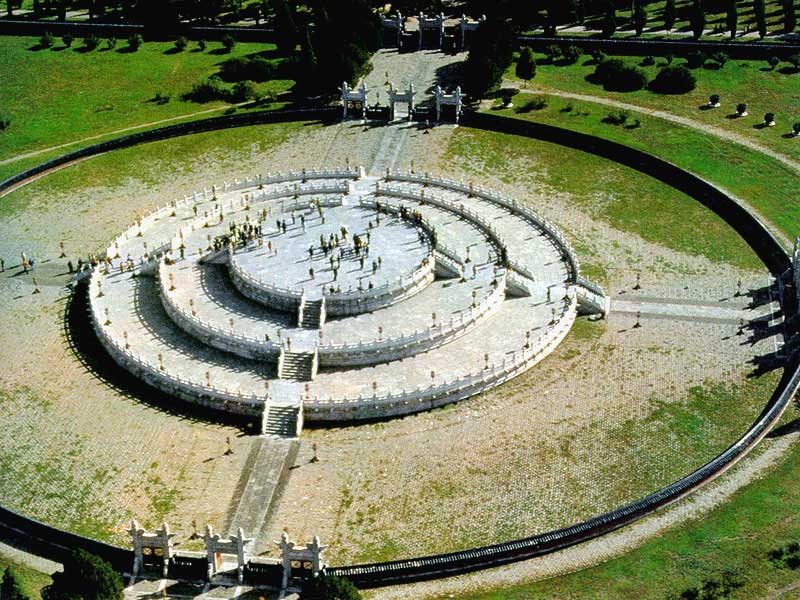
The Temple of Heaven is located in a vast park where one can come to admire the Chinese practicing Taijiquan and Qigong or exercising in dance and song.
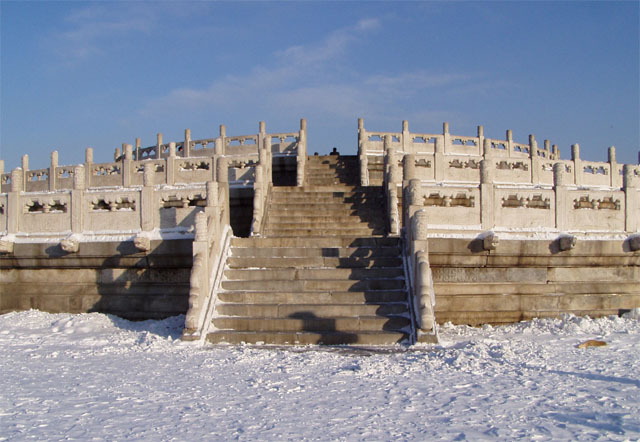
If you enter through the south gate, you first discover the Circular Altar. Built in 1530 and rebuilt in 1740 on a square base representing the Earth, the round altar (representing Heaven) consists of three terraces culminating in the center in a symbolic representation of the number 9. When standing at this center, the sound made by clapping or speaking is amplified. This is a curiosity not to be missed and not always known to visitors. You must stand exactly in the center for the effect to occur. The number nine and its multiples have a symbolic value: it is the highest number. Nine concentric circles radiate around the central stone: the first consists of nine stones and the last of 81 stones (9 times 9). The steps that allow access are always in groups of nine. The altar is surrounded by 360 marble balustrades. Until 1911, before the fall of the empire, the emperor came here to celebrate an elaborate ceremonial with offerings of sacrificed animals, alcohol, jade tablets, and silks, always organized around the number nine.
North of the Circular Altar, an enclosure 65 meters in diameter called the Echo Wall surrounds the Imperial Vault of Heaven. If it is not too crowded, a whisper emitted on the opposite side is quite audible.
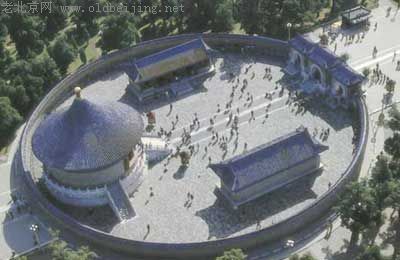
In the Imperial Vault of Heaven were kept the tablets of Heaven and the deceased emperors. This octagonal building was constructed at the same time as the Circular Altar and according to the same proportions as the Temple of Prayer for Good Harvests. The Imperial Vault of Heaven is flanked by two buildings. The one to the east contains very beautiful paintings. It is dedicated to Yang: the deity of the sun, the pole star, planets, etc. The one to the west is dedicated to Yin: the deity of the moon, clouds, rain, etc. It features a double row of beautiful polychrome beams.
The three sound slabs on the walkway also have an interesting curiosity: if you clap your hands in front of the first slab, you get a single echo; if you repeat the experiment in front of the second, the echo is double, and triple in front of the third.
The Nine Dragons Cypress, outside, is over 500 years old!
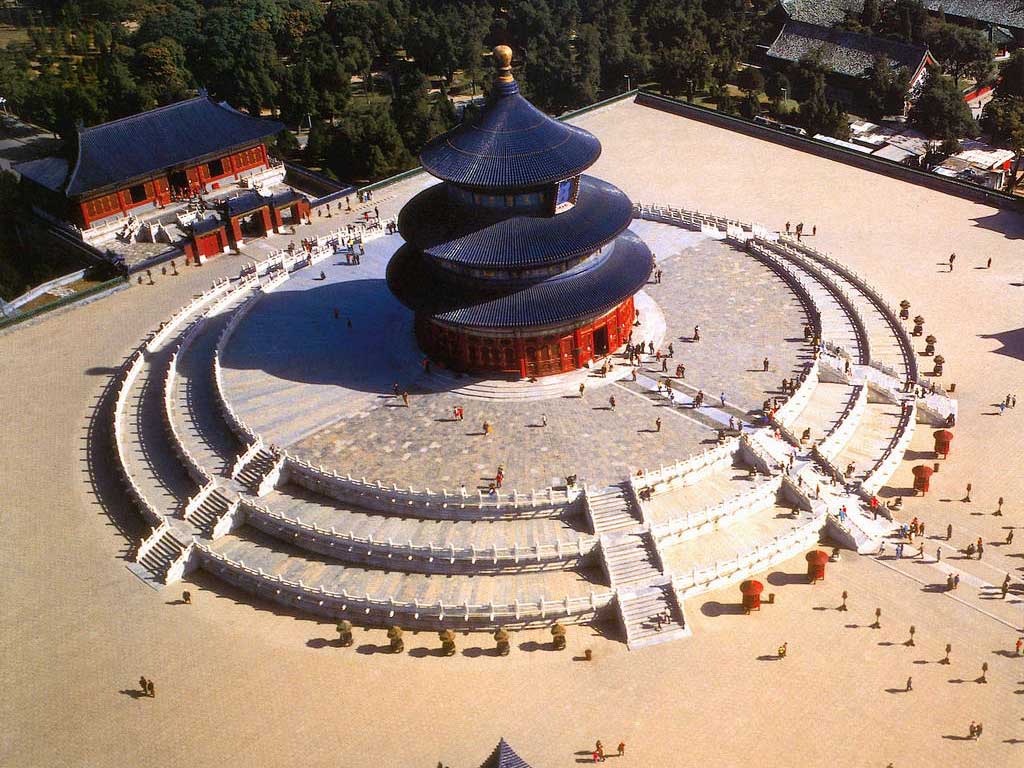
The Temple of Prayer for Good Harvests is a magnificent building on three superimposed marble terraces. The temple is 38 meters high and 30 meters in diameter, entirely made of wood, without a single nail! Built in 1420, it was destroyed by lightning in 1889 and rebuilt identically. It is the symbol of tourist China. Its photo is found everywhere, with its triple roof of blue tiles. Outside, in the middle of the staircase, three stones represent the clouds, the phoenix, and the dragon. Inside, four large columns symbolize the four seasons in the center, then 12 columns symbolize the twelve months of the year, and another twelve symbolize the divisions of a day. Finally, the last 28 represent the 28 constellations.
To the east is the Temple of Fasting. This is where the emperor and his ministers observed a three-day fast before each ceremony. It is now an exhibition hall displaying various sacrificial instruments, mainly from the Qing Dynasty.
To the west of the park is the natural history museum with some of the largest dinosaur skeletons discovered to date. There is also a section of botany, zoology, and a collection of fossils.
